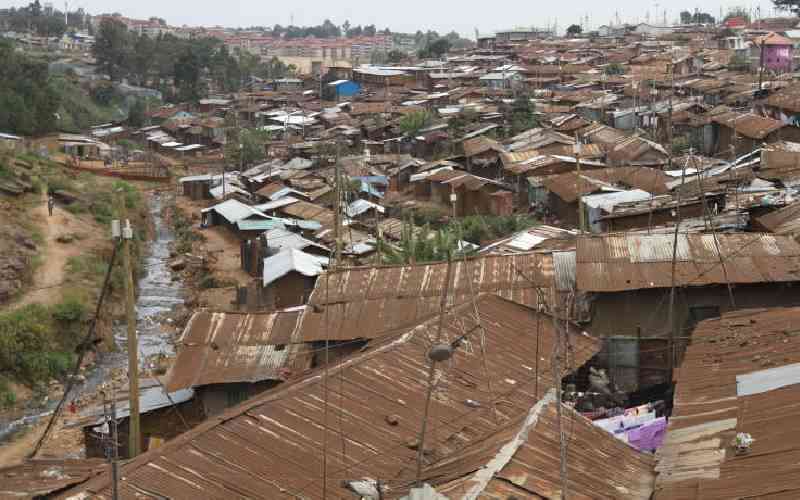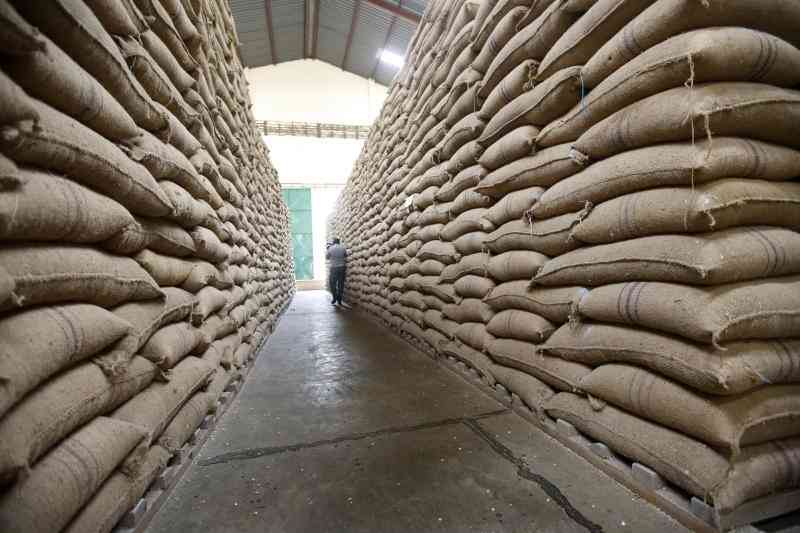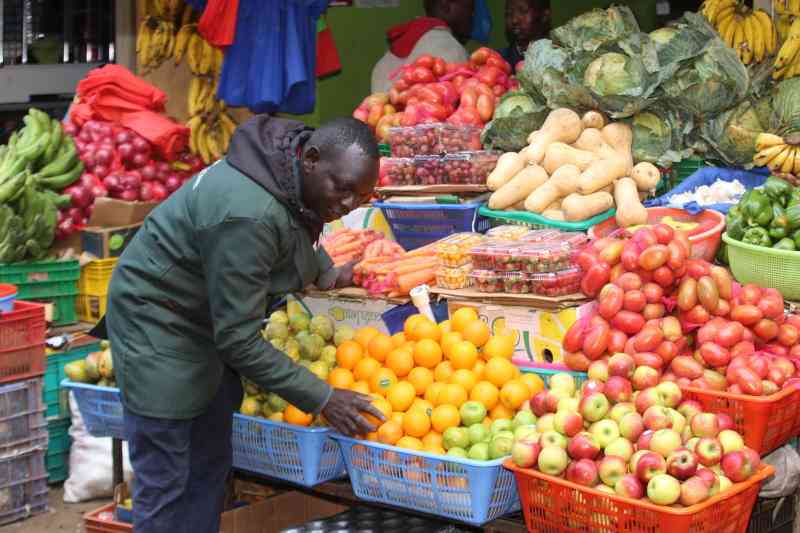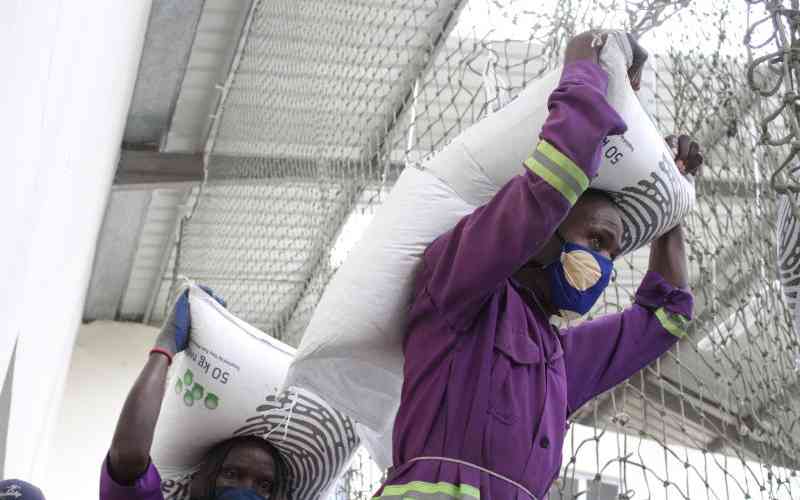Many farmers are feeling the pressure of urbanisation and they are damned if they sell their farms and damned if they don’t. Home & Away explores their prevailing predicament
With the increase in demand for affordable housing, coffee farmers are being enticed by developers to sell their farms for a better and immediate return on their investment in real estate. Though this appears to be a good prospective for some farmers, others have resolved to hold onto their farms.
With a steady increase in population, the need for housing in Nairobi has led to an upsurge of development projects within the city and its environs.
Land that was traditionally agricultural is quickly being turned into concrete jungles to house city residents. This increase in housing units in areas that were previously regarded as fringe zones has brought with it another aspect of urbanisation, which is quickly spreading in Nairobi and its neighbouring counties — the growth of suburbs.
While some are of the opinion that real estate development around the city is a threat to food security, others see it as inevitable and timely.
Suburban bliss
Areas such Ongata Rongai, Kiambu, Ngong, Athi River and Kitengela have in a subtle way associated with the capital city. Apart from these areas, shopping malls are mushrooming in almost every corner of the city hence reducing the human traffic to the centre of the city.
There are small commercial centres that have come up more recently like Galleria Mall, Capital Centre, Karen Shopping Centre, Junction Mall and Buru Buru. These have sought to provide a number of services to the residents living around those areas.
In Kiambu County, tracts of land that had hitherto been under coffee and tea farming are being turned into residential estates. A good example is Tatu City, which is expected to be an exceptional city, the first of its kind of comprehensive planning in Kenya.
Some say it is inevitable, as every town situated in a neighbourhood that is agriculturally productive will always expand into the agricultural land.
Trevor Kanja, the managing director of Nairobi Homes, states that with the development of residential areas farther out of the city centre, other services are bound to be in demand in those areas.
Positive outlook
?Says Kanja: “It does not make sense when a person spends more than half an hour travelling from Westlands to Lang’ata in this era of traffic jams; services, therefore, come close to the people so that they can access them without having to travel far.”
Even the expected shift to the county system of government is not seen as a deterrent to more estates coming up near Nairobi. Kanja notes that big businesses and offices are the biggest tax payers hence many people will still be drawn to Nairobi.
His only hope is that as buildings come up, the government will do its bit in planning.
Stay informed. Subscribe to our newsletter
Gerald Mwangi of Buffalo Hills Leisure and Golf Village in Thika says people want serenity, exclusivity and security hence the dash away from the city centre. Areas around the city have been identified as congested.
Mwangi says, “People want a place where their children can live a life devoid of pollution and the inherent dangers associated with living too close to the city. To most people, living away yet close to the city is a status symbol due to inner city decay.” ?
Planning for these latest development in the housing sector may be a challenge but the Department of Physical Planning in Ministry of Lands is currently working hard to ensure that residential areas just mushroom anyhow.
Augustine Masinde, the director of physical planning in the Ministry of Lands says, “There must be deliberate, well-thought strategies by having a budgetary commitment on infrastructure.” Masinde sees the development of areas around the city having both positive and negative aspects. Most critical among the positive aspects, he notes, there is creation of opportunities both directly and indirectly such as jobs.
This reality has also seen the increase in value of land because of high demand, which has outstripped supply.
Flip side
On the other hand, Masinde decries the encroachment that has been seen, with case in point being the human-wildlife conflict around the Nairobi National Park and the diminishing farmland.
Despite these negative aspects Masinde points out that the private sector in liaison with the government can create a boom in business and job opportunities in these suburban areas.
Still, the big questions remains, is it worthy to mow down our coffee plantations for the concrete jungle?
Kenya has approximately 170,000 hectares of coffee in different regions such as Kiambu, Ruiru, Thika, Kirinyaga, Nyeri, Murang’a, Machakos, Trans Nzoia and Marakwet.
Whereas smallholders account for 77 per cent of the current production area, they only produce 57 per cent of the country’s total annual yield.
On the other hand, large scale plantations with 23 per cent of the production area account for 43 per cent of the annual production estimated to be 52,000 metric tonnes this year.
Some of the large plantations are owned and managed by private companies like Sasini and Kofinaf. Other estates that are owned by individuals either manage the farms themselves or engage the services of professional farm management agents like Coffee Management Services Ltd and Tropical Farm Management (K) Ltd.
This would explain the higher productivity per unit area in the large estate sector compared with the smallholder sector.
Generational mindsets
While the older generation of Kenyans may want to hold on to the farms for sentimental value, income generation or as family heritage, the younger generation seem to prefer to trade in their inherited coffee farms for real estate and capitalize on upcoming expanding cities.
Private companies that own some of the expansive coffee plantations within the Nairobi Metropolitan area have also sold or plan to dispose part of the area under coffee for real estate development to capitalise on the increased value of land due to the expanding city.
Other farmers may choose to sell their coffee farms due to financial constraints, challenges or risks of the agricultural sector.
Coffee is an investment commodity and like every business, the entrepreneur farmer makes his own decisions as to how to maximise or diversify his investment.
Farmers peg their decisions based on how much they would actually obtain from the land verses how much annual returns they get from the coffee farm.
Depending on location, a farmer can sell an acre of land in Kiambu for approximately Sh30 million.
According to Commercial Coffee Millers and Marketing Agents Association, a well-managed farm in the area would produce one tonne of coffee per acre with a net return of about Sh200,000 per annum. Such a farmer may choose to sell his land for the attractive lump sum of Sh30 million and diversify his investments to real estate or otherwise.
Lucrative deals
This situation changes as one move farther into the rural areas. A small farm holder in Kirinyaga, Nyeri or Embu area makes an average net return of about Sh300, 000 per acre annually. He would, therefore, be reluctant to sell off the land as the price of land is an average of Sh300,000 per acre.
Retaining the land is a better option for such a farmer as he is assured of continuous income every year from the coffee sale.
According to Martin Ngare, the Secretary of Commercial Coffee Millers and Marketing Agents Association, “It is hard to dictate to the coffee farmer whether or not to sell his coffee farm for real estate development. The decision lies solely with the farmer.”
However, Kenya still needs foreign exchange that comes from coffee and agricultural policies must be made to ensure that ample land is left for agriculture.
Ngare believes there will be a saturation point beyond which some of this land can be converted to real estate when one considers the uptake of this housing development in light of the unpredictable financial markets.
“A case in point is the reported slowdown in mortgage uptake due to high interest rates,” says Ngare.
Compared to last year there has been a 40 per cent increase in coffee supply from the farmers, with 37,000 metric tonnes being produced in the year 2010-2011 compared to 52,000 metric tonnes this year.
Spiralling stats
Statistics from the International Coffee Organisation indicate that international coffee prices dropped by over 30 per cent last year. Locally the prices dropped from an average of Sh33,000 per 50kg bag in July 2011 to Sh17, 000 per 50kg bag this year for AB grade.
Some farmers who have sold their coffee farms in the traditional Nairobi’s coffee belt around Runda, Muthaiga, Kitisuru, Nyari, Thika Greens and Tatu City have purchased cheaper land in the rural areas and planted coffee or invested in other businesses.
It has been claimed that many developers are paying off the farmers hundred of millions to acquire the land, an amount that would have taken years or even decades for the coffee to bring in.
“Just look at the value for developers are willing to pay off the farmers for their land? Isn’t it a lucrative deal that the coffee will not be able to give you?” asks Peter Adhoch, a property valuer.
Adhoch says that as much as the real estate is booming, to counter the loss of farmland, the government should tighten the change of user law so that these farms can be protected.
Illogical action
“It is not logical for us to replace these coffee, tea or even maize farms with concrete in the name of real estate. We have been known as an agricultural country and it should remain that way. There are a lot of arid areas where these future cities can be built and thrive. It has been done in Dubai, Egypt and Libya. Why can’t we do it here and let the agricultural land be?” poses Adhoch.
Patricia Githu, a director at Developing Africa, a real estate firm, says developers should never encourage the acquisition of previously agricultural land for real estate developments.
Worldwide concern
“I have been a strong campaigner of the non conversion of agricultural land into real estate, Early this year I did turn down an offer of buying close to 100 acres of coffee farm so that I can put up houses. It’s not the way to go. We might not feel the effects but 50 years from now, the coming generations will,” says Githu.
In an interview with Reuters, Etienne Delbar, chairman of the Kenyan chapter of the Ten-Nation Eastern African Fine Coffees Association, noted that the conversion of agricultural land into real estate is not just a Kenyan problem but a worldwide concern.
Delbar, who was formerly the head of Kenya’s biggest coffee producer, Socfinaf, says that electricity, water and labour costs have gone through the roof and it is more difficult to get labourers. Water for irrigation is also scarce nearer the city, leaving this sector at the mercies of the lucrative real estate prospectors.
The productivity of Kenyan smallholder farms is also too low, guaranteeing peasant farmers remain poor.
Presently, 60 per cent of Kenyan coffee is grown by smallholders and the rest by large coffee estates, compared with 100 per cent in Rwanda and Uganda, and 80 per cent in Ethiopia. Out of the 170,000 hectares under coffee in Kenya, estates represent around only 12 per cent but produce 40 per cent of the harvest.
Perhaps there is something that Kenya is doing wrong from the onset seeing that coffee estates tend to give better dividends than small-scale farming.
One wonders if the ongoing uptake of land under coffee farming by real estates developers would still be witnessed were Nairobi to be surrounded by vast, profit making coffee estates in Kiambu and its environs. But... that is just hypothetical.
For the time being, however, the small scale coffee farmer has to contend with minimal and dwindling fortunes in coffee production coupled with heritage sentimentalities, or trade in his farm for everything or nothing when the real estate developers come calling.
— Report by Wangechi Kanyeki, Allan Olingo and Jeckonia Otieno.
 The Standard Group Plc is a
multi-media organization with investments in media platforms spanning newspaper
print operations, television, radio broadcasting, digital and online services. The
Standard Group is recognized as a leading multi-media house in Kenya with a key
influence in matters of national and international interest.
The Standard Group Plc is a
multi-media organization with investments in media platforms spanning newspaper
print operations, television, radio broadcasting, digital and online services. The
Standard Group is recognized as a leading multi-media house in Kenya with a key
influence in matters of national and international interest.
 The Standard Group Plc is a
multi-media organization with investments in media platforms spanning newspaper
print operations, television, radio broadcasting, digital and online services. The
Standard Group is recognized as a leading multi-media house in Kenya with a key
influence in matters of national and international interest.
The Standard Group Plc is a
multi-media organization with investments in media platforms spanning newspaper
print operations, television, radio broadcasting, digital and online services. The
Standard Group is recognized as a leading multi-media house in Kenya with a key
influence in matters of national and international interest.








